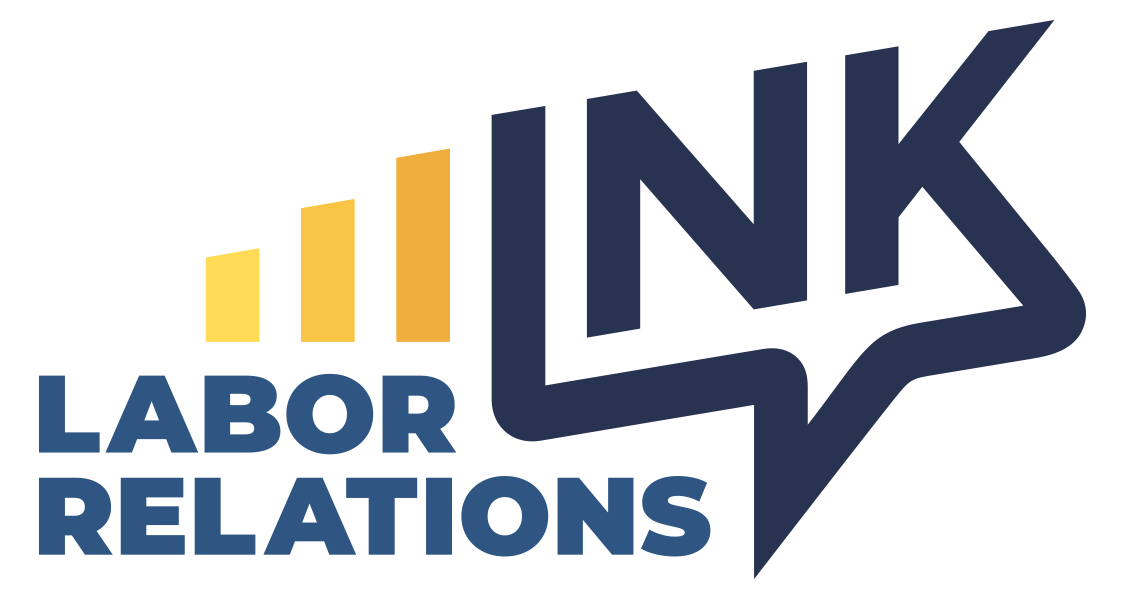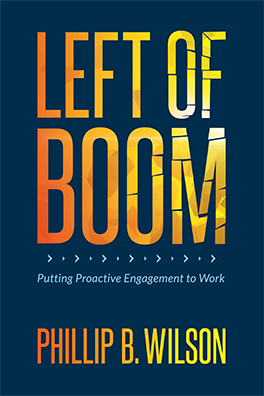 Labor Relations INK In this issue:
Labor Relations INK In this issue:
- EFCA Update
- Stern Signs Off
- Truth & Disclosure
- SEIU Watch, ULP Charge Of The Month, Scoreboard and more…
 Another recent article by Proskauer Rose, provides a good reminder that company executives should not forget that NLRB regulation applies to non-union companies and employees. With the landscape likely to continue to change significantly, now would be a prudent time to review issues such as: • A published company statement on unions. • A company no-solicitation rule • Company policy on the employee’s use of the email system • Company dress code issues (particularly buttons and accessories) • Rules regarding the disclosure of confidential information (and its definition) • Company policy regarding the right to an Employee Representative at an investigatory review. Be looking for an article by us soon addressing these crucial issues! ********** 12 Union Myths Exposed In our sixth installment of The Cato Journal’s January 2010 “Are unions good for America?” issue, we cover the sixth myth. In our sixth installment of The Cato Journal’s January 2010 “Are unions good for America?” issue, we cover the sixth myth. Here is The Homeland Stupidity web site’s synopsis of this myth, and a link to each of the 12 Cato articles.
Another recent article by Proskauer Rose, provides a good reminder that company executives should not forget that NLRB regulation applies to non-union companies and employees. With the landscape likely to continue to change significantly, now would be a prudent time to review issues such as: • A published company statement on unions. • A company no-solicitation rule • Company policy on the employee’s use of the email system • Company dress code issues (particularly buttons and accessories) • Rules regarding the disclosure of confidential information (and its definition) • Company policy regarding the right to an Employee Representative at an investigatory review. Be looking for an article by us soon addressing these crucial issues! ********** 12 Union Myths Exposed In our sixth installment of The Cato Journal’s January 2010 “Are unions good for America?” issue, we cover the sixth myth. In our sixth installment of The Cato Journal’s January 2010 “Are unions good for America?” issue, we cover the sixth myth. Here is The Homeland Stupidity web site’s synopsis of this myth, and a link to each of the 12 Cato articles.
Myth Number Six: Unions help preserve manufacturing jobs. Fact: Unions were a contributing factor in the decline of American manufacturing, especially in the automobile industry. Detroit makes a great example. At the start of the 20th century, Detroit was a boom town and its manufacturing jobs were paying 33 percent above the national average. Union organizers brought their message of capitalist greed and exploitation to already highly paid auto workers, where it largely fell on deaf ears. Until the Great Depression, when union organizers used a variety of underhanded tactics to force automakers, steel plants and other manufacturers to unionize. Stephen J.K. Walters, economics professor at Loyola, explains what happened next. Companies, squeezed hard and struggling to survive, would move their operations out of Detroit and other cities, and later, out of the country entirely: “ In sum, at the onset of World War II most of America’s great industrial firms — which, thanks to agglomeration economies were concentrated in cities throughout the East and upper Midwest — now faced labor cartels. These cartels needed some time to consolidate their power, so increases in employers’ wage costs would be significant but gradual. Further, WWII and its aftermath, during which time America’s industrial rivals’ productive capacity suffered heavy damage that would be restored only slowly, insulated the unions and firms to some degree and for some time from the most severe competitive consequences of monopolistic and opportunistic prices for labor. But the employers started to adapt immediately in ways that standard economic theory would predict — and that would ultimately help create what became known as America’s Rust Belt. Union actions, clearly, were not the only reason that industrial cities would decapitalize, depopulate, and become poorer in the second half of the 20th century, but they merit inclusion on the list.” If you’ve lost a manufacturing job any time in the last 50 years, thank your union boss for destroying your job, with a one-finger salute.
Download the PDF here. Check out the Cato Journal and access all 12 PDFs here. ********** Stern Signs Off  It is old news by now that Stern has announced his upcoming resignation as head of the SEIU. Until Stern announces how he will cash in his political capital, it is useless to speculate. However, it is interesting to listen to pundits on both sides of the Big Labor issue dissect his legacy, as there are lessons to learn on both sides of the aisle. Here is a quick synopsis by some of the more astute and credible sources: • Stern started out asking the right questions, but came up with the wrong answers (from labor writers at Labor Notes). • Stern’s mission to transform the labor movement is faltering, while his own union is in poor fiscal health and rocked by federal investigations (from Washingpost.com) • Stern used the resources of one of America’s largest union to secure his own political power and will leave the organization in disarray and with a crisis of leadership from top to bottom (Sal Rosselli, President of NUHW) • Stern’s borrowing of funds to buy labor-friendly politicians have almost bankrupt the union, creating $4 million in interest payments in 2009 alone, most likely inspiring the corporate campaign against Bank of America, one of its largest creditors.
It is old news by now that Stern has announced his upcoming resignation as head of the SEIU. Until Stern announces how he will cash in his political capital, it is useless to speculate. However, it is interesting to listen to pundits on both sides of the Big Labor issue dissect his legacy, as there are lessons to learn on both sides of the aisle. Here is a quick synopsis by some of the more astute and credible sources: • Stern started out asking the right questions, but came up with the wrong answers (from labor writers at Labor Notes). • Stern’s mission to transform the labor movement is faltering, while his own union is in poor fiscal health and rocked by federal investigations (from Washingpost.com) • Stern used the resources of one of America’s largest union to secure his own political power and will leave the organization in disarray and with a crisis of leadership from top to bottom (Sal Rosselli, President of NUHW) • Stern’s borrowing of funds to buy labor-friendly politicians have almost bankrupt the union, creating $4 million in interest payments in 2009 alone, most likely inspiring the corporate campaign against Bank of America, one of its largest creditors. 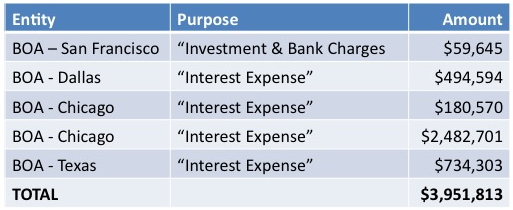 • Stern moved the SEIU from $8 million in liabilities in 2002 to having liabilities of $156 million by 2008. (The Heritage Foundation) • Stern moved the SEIU from an organizing machine to a political machine. (The Heritage Foundation) • Stern’s void will allow Richard Trumka of the AFL-CIO to “emerge as the pre-eminent leader of American labor … no longer having to contend with Andy Stern and his special relationship with Obama.” (Cletus Daniel, a professor of labor history at Cornell University’s Institute for Labor Relations) • Stern instigated a split in the labor movement by taking several unions out of the AFL-CIO to join a new federation, Change To Win. His absence will allow the remaining Change To Win labor federation members to re-unite under the AFL-CIO banner. (Investors Business Daily) If you are interested in hearing from Stern himself, here is his five-and-a-half minute good bye speech via YouTube. [flashvideo provider=youtube file=http://www.youtube.com/watch?v=mSA5PEG9H5w /] **********
• Stern moved the SEIU from $8 million in liabilities in 2002 to having liabilities of $156 million by 2008. (The Heritage Foundation) • Stern moved the SEIU from an organizing machine to a political machine. (The Heritage Foundation) • Stern’s void will allow Richard Trumka of the AFL-CIO to “emerge as the pre-eminent leader of American labor … no longer having to contend with Andy Stern and his special relationship with Obama.” (Cletus Daniel, a professor of labor history at Cornell University’s Institute for Labor Relations) • Stern instigated a split in the labor movement by taking several unions out of the AFL-CIO to join a new federation, Change To Win. His absence will allow the remaining Change To Win labor federation members to re-unite under the AFL-CIO banner. (Investors Business Daily) If you are interested in hearing from Stern himself, here is his five-and-a-half minute good bye speech via YouTube. [flashvideo provider=youtube file=http://www.youtube.com/watch?v=mSA5PEG9H5w /] **********
Left of Boom: Best Practices for Proactive Companies in a Changing Labor Environment Some of the most powerful business tactics and strategies are discovered in the crucible of the war. Discover the new lessons for American businesses learned from the experiences of American troops in Iraq and Afghanistan. • Why most of your “proactive” measures aren’t proactive at all and how to tell the difference between real and “fake” preventive measures; • The 5 key tactics military strategists used when they realized they were losing against insurgent IED attacks – and how you can apply them in your business today; • 6 different “left of boom” activities you can use now that will give your company big leverage in its positive employee relations strategy.; Download your free copy of “Left of Boom” by clicking the link below: Click here to download your copy. ********** Truth & Disclosure: 
![]() Since the Obama administration has rolled back disclosure reporting requirements on unions, it is more difficult for union members to find out just what their dues money is being spent on. Americans for Limited Government is attempting to fill the gap by creating two new websites where SEIU and UFCW members (and anyone else interested) can get more information about what these unions are doing with their money. Check them out at: www.SEIUmonitor.com www.UFCWmonitor.com ********** SEIU Watch: Next to Andy Stern’s imminent departure, the next biggest SEIU story is the California court case. From an initial claim of $28 million in damages, the SEIU was awarded $1.5 million (according to SEIU – NUHW claims the levy was only $737,850). Of the 28 originally named defendants in the suit, 2 were dropped before trial, and no judgment was made against another 12. The remainder were asked to reimburse the SEIU for wages and “diversion of resources” that ostensibly occurred in the weeks just prior to the trusteeship.
Since the Obama administration has rolled back disclosure reporting requirements on unions, it is more difficult for union members to find out just what their dues money is being spent on. Americans for Limited Government is attempting to fill the gap by creating two new websites where SEIU and UFCW members (and anyone else interested) can get more information about what these unions are doing with their money. Check them out at: www.SEIUmonitor.com www.UFCWmonitor.com ********** SEIU Watch: Next to Andy Stern’s imminent departure, the next biggest SEIU story is the California court case. From an initial claim of $28 million in damages, the SEIU was awarded $1.5 million (according to SEIU – NUHW claims the levy was only $737,850). Of the 28 originally named defendants in the suit, 2 were dropped before trial, and no judgment was made against another 12. The remainder were asked to reimburse the SEIU for wages and “diversion of resources” that ostensibly occurred in the weeks just prior to the trusteeship.  It is still somewhat unclear what the basis of the award was, since the judge continually affirmed in the trial and instructions to the jury that UHW members and officers had the right to resist the trusteeship and to form a new union. Accordingly, the defendants plan to ask the judge to set aside the award, and if he does not, to appeal. Labor Notes writers sought to shed light on the issue with a little amplification of their own:
It is still somewhat unclear what the basis of the award was, since the judge continually affirmed in the trial and instructions to the jury that UHW members and officers had the right to resist the trusteeship and to form a new union. Accordingly, the defendants plan to ask the judge to set aside the award, and if he does not, to appeal. Labor Notes writers sought to shed light on the issue with a little amplification of their own:
A large part of the damages were awarded because the staff and officers of what was then SEIU’s giant United Healthcare Workers-West (UHW) local, based in Oakland, used staff time to fight the International’s decision to split the local. That fight was carried out openly and transparently. The membership understood it and approved it. In 2008 demonstrations of 5,000 and 8,000 members protested the splitting and the trusteeship of the local, respectively. In January 2009 a meeting of 5,000 stewards and shop floor leaders voted to reject the International’s ultimatum on the split.
NUHW estimates that the SEIU spent in the neighborhood of $10 million on the trial, and although both sides are claiming a moral victory, it appears that the union members who funded both unions with their dues are the only real losers in the affair.
It appears SEIU leadership would be better off leaving their mouths shut, particularly when cameras are likely to be around. This great video captures the markedly racist and belittling comments from SEIU Executive VP Gerry Hudson addressing the issue of immigration reform. One would have to wonder how many in union leadership hold their members in this much contempt? ********** Are Healthcare Unions Deadly? The National Bureau of Economic Research released a new paper titled “Do Strikes Kill? Evidence from New York State.” The abstract states “that nurses’ strikes increase in-hospital mortality by 19.4% and 30-day readmission by 6.5% for patients admitted during a strike.” The ability for unions to have access to hospital employees was deferred for many years over such concerns, but until now there was no data to validate assumptions. Perhaps now is the time to begin asking if allowing unions in the healthcare arena was such a good idea, and if the decision to do so should be rescinded. ********** LRI’s Latest Interview with an Organizer Video Mary Holden worked in the grocery industry in the upper Midwest, first as an employee and UFCW shop steward, and later as a human resources manager. Mary has seen the union’s hidden agenda from both sides of the bargaining table. For a compelling, fresh story of the real union agenda, check out our latest organizer interview here (viewing requires a username and password – to request one call 800-888-9115 or fill out the password request form). ********** DOL Members Picketing Against Secretary Solis Frustrated Department of Labor (DOL) union members will launch an informational picket on April 20th to protest what they see as inconsistent behavior between Labor Secretary Solis’ actions as an employer and her words. The picket comes as a result of Secretary Solis’ alleged lack of follow through on President Obama’s vision of implementing family-friendly work policies. Sounds like Solis could use some good labor relations consulting… ********** Hartford Nursing Home Residents At Risk Let’s hope that residents of four Hartford, CT, nursing facilities don’t read our article about the risk of death in unionized healthcare facilities. With the SEIU-affiliated employees of Spectrum Healthcare planning on going on strike “until a settlement is reached,” their level of care and attention may be suspect. Since the employees have been without a contract for over a year, it may not bode well for the residents. No matter how many temporary workers Spectrum can bring to the workforce, there is no replacing the intimacy and history that current nurses and staff with each of the residents, and it is never in the patients’ best interests when healthcare employees abandon their posts to strike. **********
Mary Holden worked in the grocery industry in the upper Midwest, first as an employee and UFCW shop steward, and later as a human resources manager. Mary has seen the union’s hidden agenda from both sides of the bargaining table. For a compelling, fresh story of the real union agenda, check out our latest organizer interview here (viewing requires a username and password – to request one call 800-888-9115 or fill out the password request form). ********** DOL Members Picketing Against Secretary Solis Frustrated Department of Labor (DOL) union members will launch an informational picket on April 20th to protest what they see as inconsistent behavior between Labor Secretary Solis’ actions as an employer and her words. The picket comes as a result of Secretary Solis’ alleged lack of follow through on President Obama’s vision of implementing family-friendly work policies. Sounds like Solis could use some good labor relations consulting… ********** Hartford Nursing Home Residents At Risk Let’s hope that residents of four Hartford, CT, nursing facilities don’t read our article about the risk of death in unionized healthcare facilities. With the SEIU-affiliated employees of Spectrum Healthcare planning on going on strike “until a settlement is reached,” their level of care and attention may be suspect. Since the employees have been without a contract for over a year, it may not bode well for the residents. No matter how many temporary workers Spectrum can bring to the workforce, there is no replacing the intimacy and history that current nurses and staff with each of the residents, and it is never in the patients’ best interests when healthcare employees abandon their posts to strike. ********** 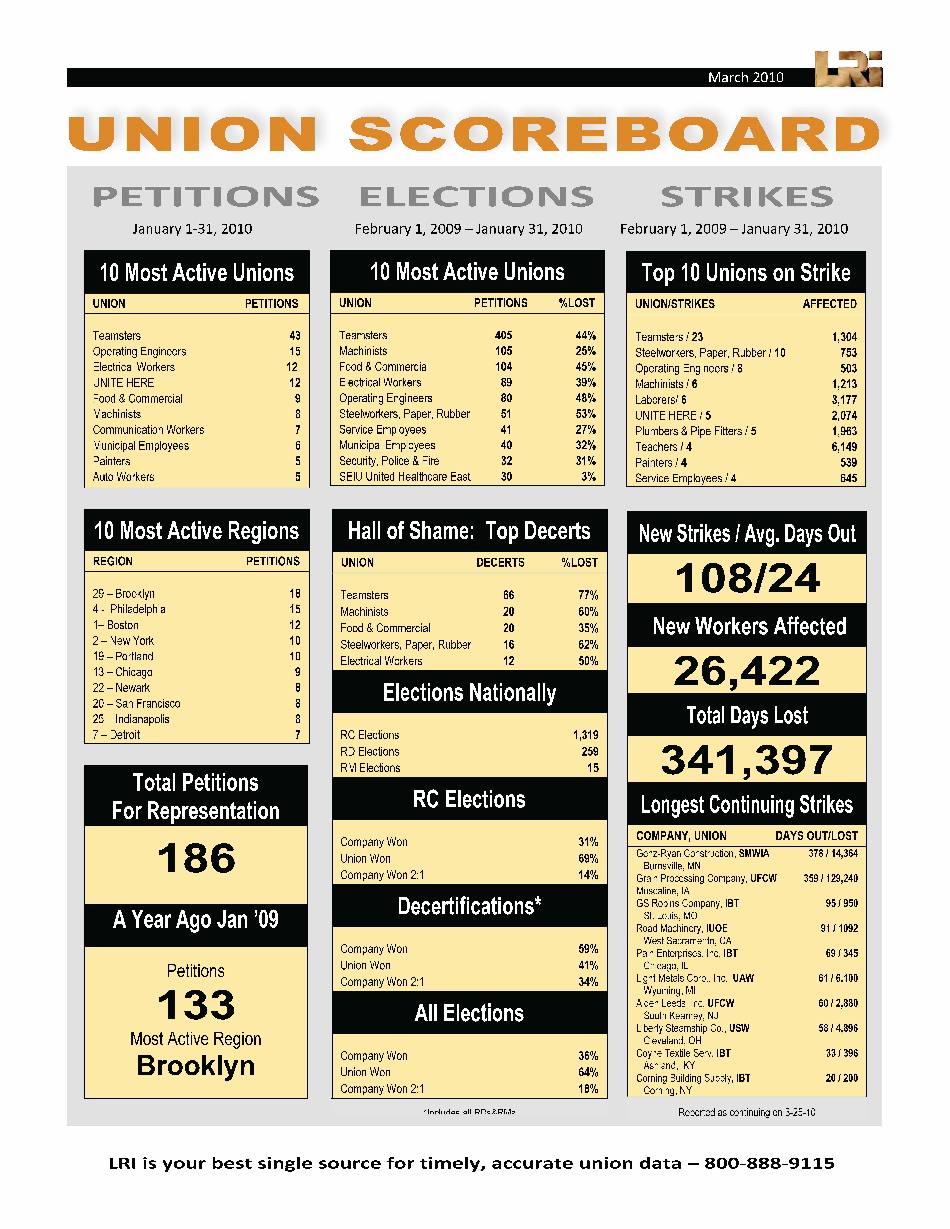 SCORE BOARD Who are the winners (and losers) of the labor movement? Don’t guess, just check the LRI Scoreboard
SCORE BOARD Who are the winners (and losers) of the labor movement? Don’t guess, just check the LRI Scoreboard
View this month’s scoreboard (archives also located here).
Download a PDF of this month’s scoreboard.
********* Unions Bully State Governments  While state governments and municipalities everywhere are grappling with budget crises, Big Labor is loaming as a larger factor in restricting the ability of government leaders to maneuver in order to keep their ships afloat. From sending members to legislative meetings to threaten representatives, to orchestrating the potential threat of the severance of federal funding, the unions are making flexing their political muscle. This succinct 1-minute video tells the story in California, as does this quote from an Investors Business Daily blog:
While state governments and municipalities everywhere are grappling with budget crises, Big Labor is loaming as a larger factor in restricting the ability of government leaders to maneuver in order to keep their ships afloat. From sending members to legislative meetings to threaten representatives, to orchestrating the potential threat of the severance of federal funding, the unions are making flexing their political muscle. This succinct 1-minute video tells the story in California, as does this quote from an Investors Business Daily blog:
California state officials learned last year of SEIU’s pull when, as part of an effort to dig the state out of its enormous deficit, they tried to trim the pay of state health workers. The state officials got a call from the Obama administration telling them to back down, or the $74 million in budget cuts they sought could cost them $6.8 billion in federal stimulus funds. Also on the phone call was Stern. As it happens, many of the state workers were also SEIU members. According to Stern, he was on the call at the White House’s invite.
********** Daycare Providers Fighting Mad  We have reported several times on the move by unions and state governments to collude in pushing unwitting home day care providers into “unions.” Four providers in Michigan have taken the issue to court, exposing the move for the underhanded scheme that it is. Even though the agency created to manage the strange government-union entity had been defunded by state legislators, the Home Based Child Care Council has continued to operate because, as Michigan Department of Human Services spokesman Elijah Woods III said, the Legislature had not included specific language to cut off the funding. The case has been bumped up to the Michigan Supreme Court and should be decided within a couple of months. ********** ULP Charge Of The Month:
We have reported several times on the move by unions and state governments to collude in pushing unwitting home day care providers into “unions.” Four providers in Michigan have taken the issue to court, exposing the move for the underhanded scheme that it is. Even though the agency created to manage the strange government-union entity had been defunded by state legislators, the Home Based Child Care Council has continued to operate because, as Michigan Department of Human Services spokesman Elijah Woods III said, the Legislature had not included specific language to cut off the funding. The case has been bumped up to the Michigan Supreme Court and should be decided within a couple of months. ********** ULP Charge Of The Month: 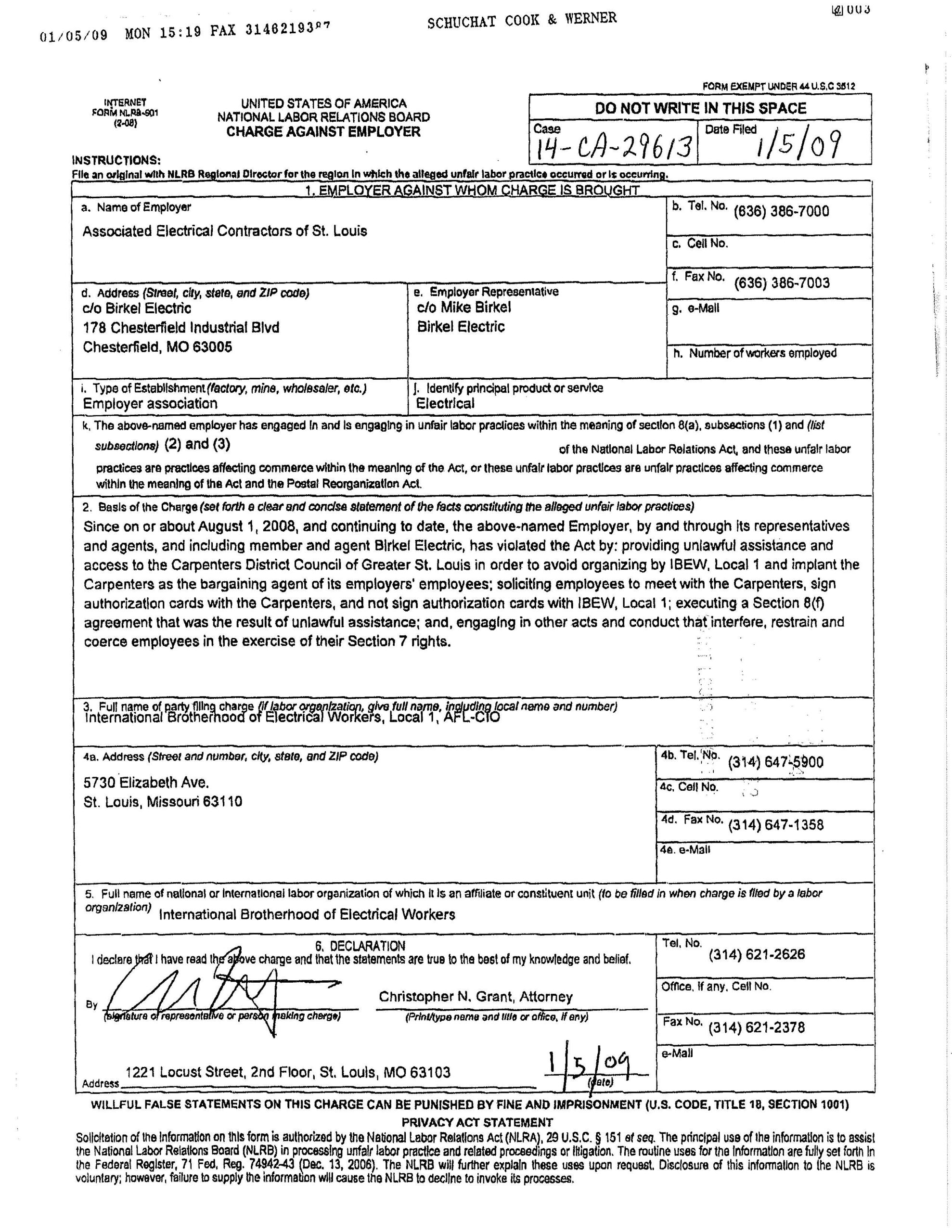 A janitorial services company in California felt compelled to file a charge against the SEIU local, claiming: Within the past six months the above-named labor organization coerced and restrained its members by: 1. Threatening union critics with bodily harm because they critized (sic) her use of union funds; 2. Refused to issue dispatches according the hiring hall rules; and 3. Refused to accept … a grievance that a supervisor used favoritism to violate the Union contract. Download PDF of ULP Of The Month here. ********** Sticky Fingers! Current charges or sentences of embezzling union officials: Amy Cousino-ANESU: $41,746 Douglas Rogers- IBPO: $150,000 Sherell Mitchell-CWA: $110,000 http://www.nlpc.org/union-corruption-update ********** Labor Relations INK is published semi-monthly and is edited by LRI Consulting Services, Inc. Feel free to pass this newsletter on to anyone you think might enjoy it. New subscribers can sign up by visiting: https://lrionline.com/free-stuff/newsletter-signup/ If you use content from this newsletter please attribute it to LRI Consulting Services and include our website address: www.LRIonline.com Contributing editors for this issue: Phillip Wilson, Greg Kittinger, Shaun Fanning You are receiving this email because you subscribed to receive our labor relations newsletters and updates. You can manage your email preferences by clicking the link at the bottom of any of our email communications. NOTE: if you are using Internet Explorer v. 6, read the text version, as the html will not load properly in IE6. We recommend upgrading to IE7.
A janitorial services company in California felt compelled to file a charge against the SEIU local, claiming: Within the past six months the above-named labor organization coerced and restrained its members by: 1. Threatening union critics with bodily harm because they critized (sic) her use of union funds; 2. Refused to issue dispatches according the hiring hall rules; and 3. Refused to accept … a grievance that a supervisor used favoritism to violate the Union contract. Download PDF of ULP Of The Month here. ********** Sticky Fingers! Current charges or sentences of embezzling union officials: Amy Cousino-ANESU: $41,746 Douglas Rogers- IBPO: $150,000 Sherell Mitchell-CWA: $110,000 http://www.nlpc.org/union-corruption-update ********** Labor Relations INK is published semi-monthly and is edited by LRI Consulting Services, Inc. Feel free to pass this newsletter on to anyone you think might enjoy it. New subscribers can sign up by visiting: https://lrionline.com/free-stuff/newsletter-signup/ If you use content from this newsletter please attribute it to LRI Consulting Services and include our website address: www.LRIonline.com Contributing editors for this issue: Phillip Wilson, Greg Kittinger, Shaun Fanning You are receiving this email because you subscribed to receive our labor relations newsletters and updates. You can manage your email preferences by clicking the link at the bottom of any of our email communications. NOTE: if you are using Internet Explorer v. 6, read the text version, as the html will not load properly in IE6. We recommend upgrading to IE7.
